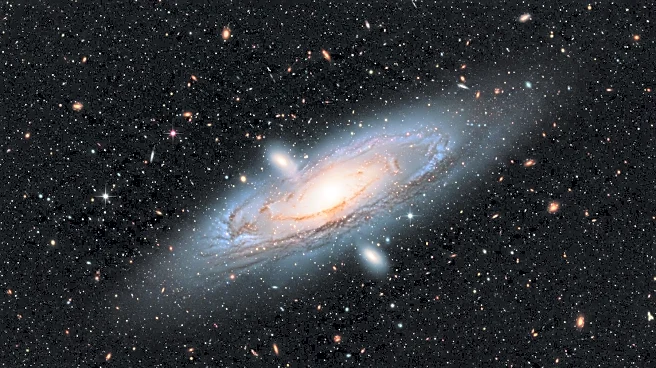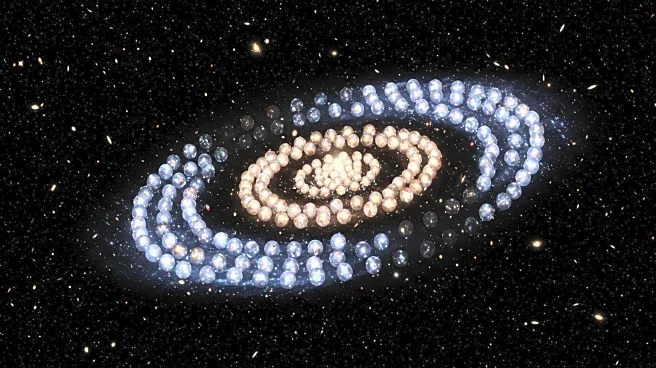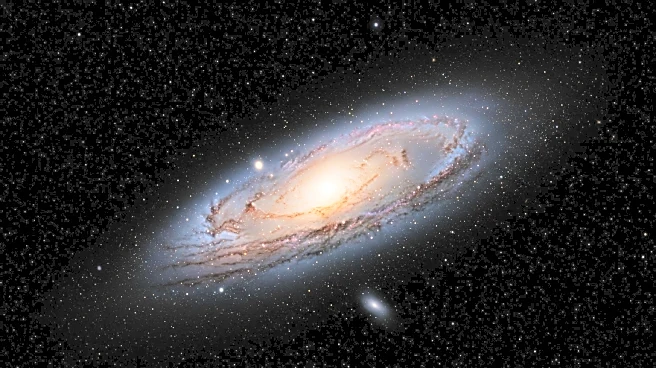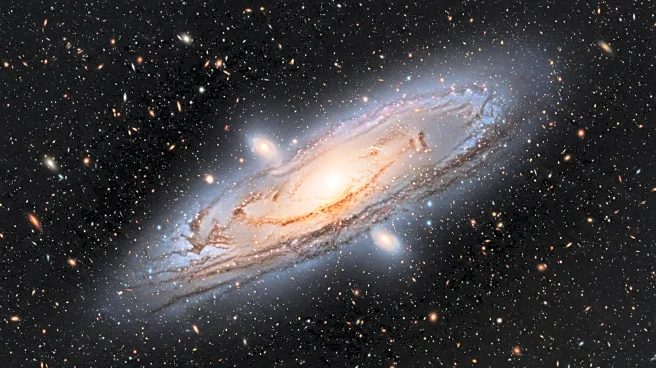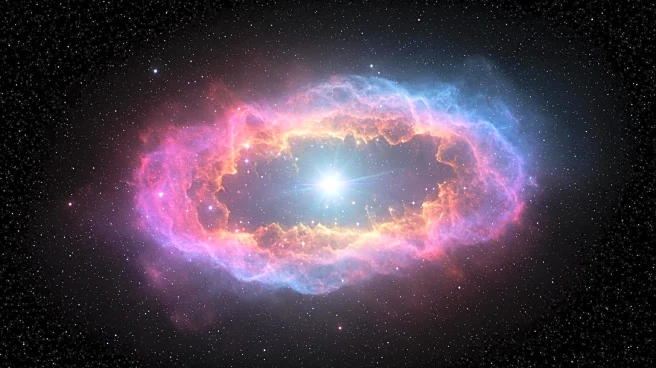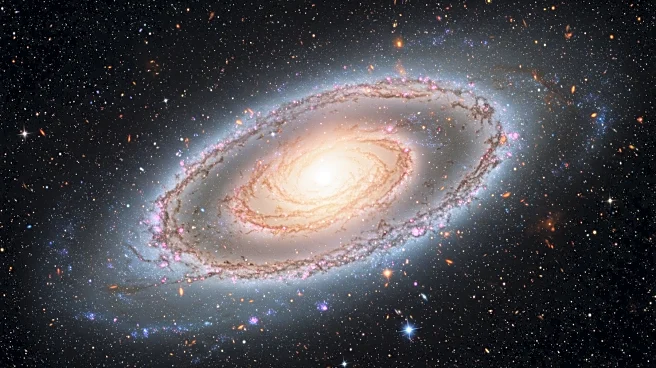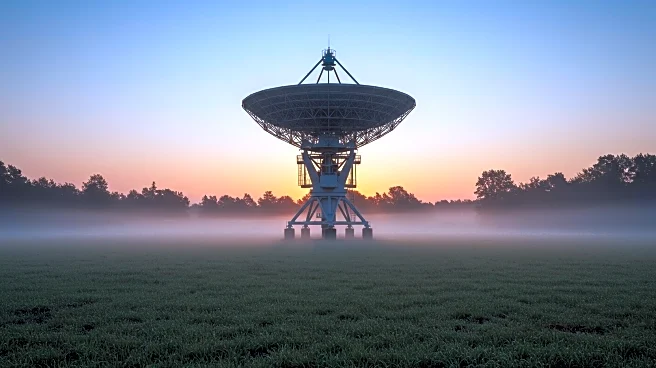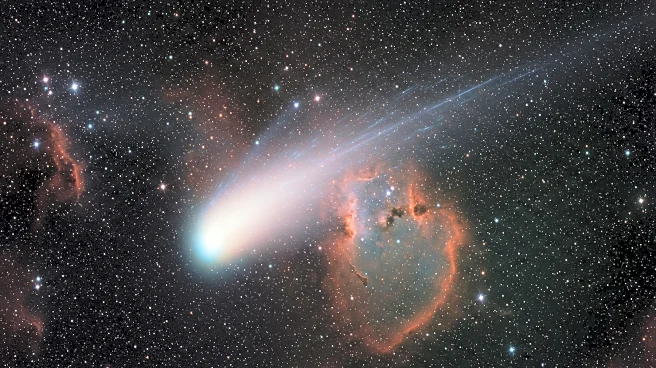Rapid Read • 8 min read
Astronomers have made a significant discovery regarding the distribution of ordinary matter in the universe. Using fast radio bursts (FRBs), researchers have been able to locate and measure the elusive ordinary matter that exists between galaxies. This matter, which differs from dark matter, has been difficult to detect until now. The study, published in Nature Astronomy, reveals that about 76% of ordinary matter resides in the intergalactic medium, the space between galaxies. This finding challenges previous assumptions that most ordinary matter was located in galaxy halos or within galaxies themselves. The research involved analyzing 69 FRBs, which originate from distances ranging from 11.74 million to over 9.1 billion light-years away, allowing scientists to study both nearby and distant cosmic structures.
AD
This discovery is crucial for cosmology as it provides hard evidence that supports models of cosmic structure that were previously based on simulations without observational confirmation. Understanding the distribution of ordinary matter helps scientists comprehend how galaxies grow and evolve. The revelation that a significant portion of ordinary matter lies between galaxies reshapes our understanding of the universe's composition. This knowledge could influence future research and theories about the universe's formation and development. Additionally, the use of FRBs as tools for mapping the universe's structure highlights their importance in astronomical studies, offering a new method to study regions of space that are otherwise too faint to detect.
The study's findings may lead to further research into the intergalactic medium and its role in cosmic evolution. Scientists might explore how this matter interacts with galaxies and influences their growth. The use of FRBs could be expanded to study other cosmic phenomena, potentially leading to new discoveries about the universe's hidden components. Observatories like the Deep Synoptic Array-110 and others involved in the study may continue to play a vital role in future research, providing valuable data for astronomers seeking to map the universe's structure more comprehensively.
The discovery of ordinary matter between galaxies could have implications for understanding the universe's dark matter and energy. As researchers continue to explore the intergalactic medium, they may uncover new insights into the universe's fundamental forces and components. This could lead to advancements in theoretical physics and cosmology, potentially altering our perception of the universe's origins and fate.
AD
More Stories You Might Enjoy
